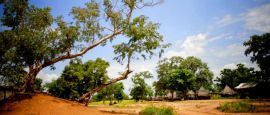Sudan Weather, climate and geography
Weather & climate
Extremely hot (less so November to March). Sandstorms blow across the Sahara from April to September. In the extreme north, there is little rain but the central region has some rainfall from July to August. The southern region has much higher rainfall, the wet season lasting May to October. Summers are very hot throughout the country, whilst winters are cooler in the north.
Geography
Sudan is bordered by Egypt to the north, the Red Sea to the northeast, Ethiopia and Eritrea to the east, South Sudan to the south, the Central African Republic and Chad to the west, and Libya to the northwest. There is a marked difference between the climate, culture and geography of northern and southern Sudan. The far north consists of the contiguous Libyan and Nubian deserts which extend as far south as the capital, Khartoum, and are barren except for small areas beside the Nile River and a few scattered oases. This gives way to the central steppes which cover the country between 15°N and 10°N, a region of short, coarse grass and bushes, turning to open savannah towards the south, largely flat to the east but rising to two large plateaux in the west and south, the Janub Darfur (3,088m/10,131ft) and Janub Kordofan (500m/1,640ft) respectively. Most of Sudan's agriculture occurs in these latitudes in a fertile pocket between the Blue and White Niles which meet at Khartoum. South of the steppes is a vast shallow basin traversed by the White Nile, and the border with South Sudan.
Do you have any Feedback about this page?
© 2025 Columbus Travel Media Ltd. All rights reserved. No part of this site may be reproduced without our written permission, click here for information on Columbus Content Solutions.




 You know where
You know where